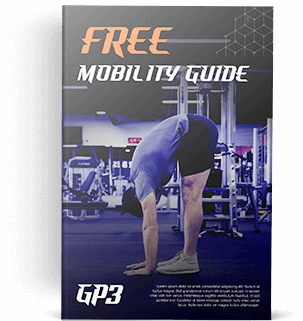Key Points:
1. When coaches yell at their athletes to “Stay up!” between bouts of cardiovascular exercise, they’re simply wrong.
2. You should bend over between sprints. Doing so helps you recover faster.
3. This is because bending over lets your body expel carbon dioxide more quickly. This needs to happen in order for you to take in more oxygen.
Estimated Reading Time: 3-6 minutes
I’ve got a collection of (slightly) shorter essays for you that I’m thinking of turning into an ongoing series. It’s called, “Things Your Coaches Got Wrong.” Now, we shouldn’t be too harsh on your youth, high school, and college coaches, as exercise science is a relatively young field. This means that new discoveries are being made and best practices are evolving at a rapid pace. On top of that, most sports coaches are not exercise scientists. However, this means you probably heard a great deal of incorrect information from them as you grew up, regardless of which sport you played. Some of these myths are stubbornly persistent, and we’re going to bust them.
Up first, we have:
Bending over between sprints (Believe it or not, you should!)
If you played any organized sport, I guarantee that at some point, you experienced the following:
The coach makes the team run sprints at the end of practice. After running down to the end of the field and back, a number of players (maybe even you!) drop their hands to their knees, chest heaving from the exertion. “Stay up!” the coach barked. Or, if it was a high school team, maybe one of the fully indoctrinated seniors yelled at you instead.
Turns out, “staying up” is exactly the opposite of what you should do. Don’t believe me? Let me attempt to un-brainwash you. First, understand that the body is pretty intelligent and logical, especially when it comes to saving energy and trying to recover between bouts of physical activity. It wants to make things easier for you. Keep that in mind when we ask the following question. Why is it
a natural, almost automatic impulse to collapse forward after intense cardiovascular exertion? There must be a reason, right? To find the answer, we’re going to first look at what well-meaning but misinformed coaches would say regarding why you should, “stay up.”
They’d likely offer something along the lines of, “You need to open your chest and stay upright in order to effectively take in more oxygen.” Well, they’re on the right track, but still completely wrong. To understand why they’re wrong, we need a quick biology lesson. I’m going to try to keep this simple, because entire textbook chapters are devoted to this process.
Time for a short Biology lesson
To quote VO2Master’s excellent summary: “All cells, including muscle cells, require oxygen to function. Energy inside cells comes in the form of adenosine triphosphate (ATP), a molecule that carries energy within cells. Most of our ATP is created through the breakdown of metabolic substrates (food) using oxygen, resulting in CO2 and water.”
Basically, oxygen is required for the process of producing the molecules that we break down to release the energy needed to perform physical activity. The process of creating these molecules produces waste products in the body, one of which is carbon dioxide. This leads us to the crux of the matter.
It turns out that when trying to bring more oxygen into the body, the limiting factor isn’t actually how quickly you can take in more oxygen. The bottleneck is how quickly you can expel excess carbon dioxide.
Expelling carbon dioxide is also way easier when you’re bent over. Try it yourself right now if you like. Stand completely upright and exhale forcefully with your mouth. Now do the same while bent over. You’ll notice a massive difference.
Next, oxygen needs a method of transport for bringing freshly oxygenated blood to the muscles and carbon dioxide to the lungs. This is the responsibility of a protein in your red blood cells called hemoglobin. Well, this process is expedited during physical activity. When running, your legs act as pistons, helping not just propel you along the ground, but also pump blood to the heart much faster than when you’re standing still. This piston-like action helps overcome the force of gravity that your blood must battle in order to flow from the legs to the heart. From the heart, the blood enters the lungs to become oxygenated, then re-enters the heart to be transported to the rest of the body.
When exercise and this piston-like propulsion suddenly stops, your body now has to fight harder against gravity to return blood to the heart. So, by collapsing forward, your body reduces the distance your blood has to travel in direct opposition to gravity.
So, by staying upright rather than bending over between bouts of exercise, you’re doing two things that inhibit your ability to recover quickly:
- You’re decreasing the rate at which you can expel carbon dioxide
- You’re increasing the degree to which your blood must fight gravity to return to the heart
Both of these slow the process by which your fatigued muscles can receive that sweet, sweet oxygen they so desperately crave.
So, why is, “Stay up!” still shouted at young athletes?
With the above process understood, it’s useful to understand why this mistaken belief persists. The culprit is likely the misplaced bravado common to many sports. By staying upright, you create the appearance of a lack of fatigue. Perhaps one could argue this may seem intimidating to an opponent during a game, especially when compared to outwardly showing tiredness by doubling over.
However, I would counter that the psychological advantage could be flipped here. Let your opponent stubbornly remain upright between intense plays while you double over. They’ll think they’re in way better condition than you, and that they have you beat. All the while, you’re recovering more quickly than they are. Then, by the time the final stages of the game roll around, your increased recovery time will let you blow right by them while they wonder where you found all this energy. Pretty nifty, huh?
I expect many coaches will be hesitant to accept this, as it goes against what they’ve been told their entire lives. However, in reality, as with outdated truisms like, “Don’t let your knees go over your toes when you squat,” or “Lifting weights will make you bulky and slow,” the dreaded “Stay up!” can be consigned to the trash heap.
Before you go, I’d love to hear from you! What was your initial reaction? Relieved, outraged, skeptical…all of the above? How much less miserable would end-of-practice sprints have been if your coaches had known this? Let me know!

